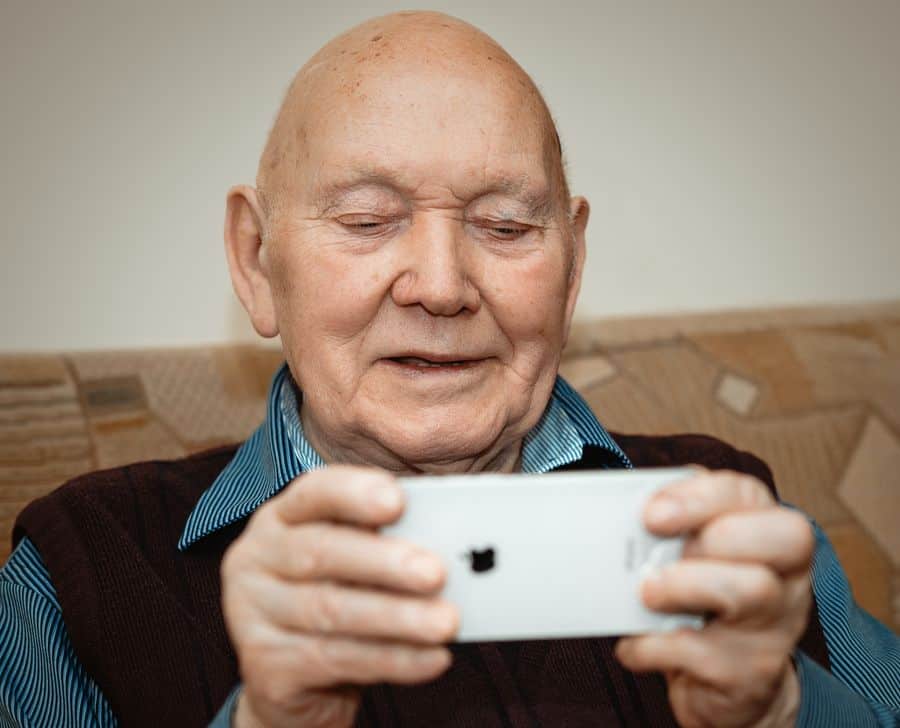Guest article: Why isolation and loneliness are ignored epidemics among older adults
Isolation and loneliness are the ignored epidemics ravaging the lives of older adults, particularly among those with diminishing health and mobility issues, but technology can help to play a role in overcoming this growing problem.
Shainoor Khoja, CEO and founder of Thrive Community, discusses this issue further and the ways in which to help overcome it.
by Shainoor Khoja
Loneliness and isolation are taking their toll on people of all ages right now with older people being impacted the most. Life was hard enough for many of them in a pre-Covid-19 world given limited support from friends and relatives, housebound challenges due to diminishing health or other mobility issues, NHS staff shortages or the accessibility and affordability of adequate care in the first place.
The pandemic has only exacerbated an already dire situation. Almost 12 months on and older adults living independently are still being advised to minimise contact outside their respective support bubbles.
Those living in residential care are only permitted virtual contact with close relatives. When they are allowed real world visitors, it’s behind Perspex screens with friends and family members obliged to wear PPE so they look like spacemen. Such foreboding conditions can be intimidating at best and for some older adults it can be very frightening indeed.
Research is showing that reduced social contact is detrimental to the physical and mental wellbeing of many and the continued virtual appointments combined with constantly changing social distancing guidelines (intended to keep them safe) are exacerbating the problem further.
Digital divide is not acceptable
Considering we live in a digital world, it begs the question as to why do older adults feel lonely, isolated, and removed from society? After all, PCs, laptops, smartphones and tablets are widely available, most areas of the UK have adequate broadband and 4G coverage, and platforms like Zoom, Skype, and FaceTime are providing some semblance of normality by allowing us to see the people we’re talking to.
Sadly, many older people lack the skills, confidence and motivation to take advantage of these platforms and other digitised service due digital poverty and/or poor system design.
Such a state of affairs is not really acceptable for a country aspiring to eradicate digital poverty and for an NHS wanting to implement a long-term digital transformation plan with a mobile-first strategy and connectivity at its core. There is an international shortage of technology built specifically for older adults which is a concern as this demographic is growing faster than any other.
The lack of intuitive technology for this age group makes it all the more difficult for overstretched healthcare professionals to benefit from the value that well designed technology could bring. In many instances, digital devices and the services they support are hindering rather than helping overburdened social workers and other outreach teams.
Smartphones should be serving as a “go to” communications and patient management tool but this isn’t happening in reality and older people are becoming more and more isolated as a result.
Engaging with technology
The downfall of many handsets and other consumer electronic devices, along with the health and wellbeing services they power, is that a certain amount of knowhow is needed to get them up and running in the first place.
There are browser issues and settings menus to contend with, seamless experiences are not always that seamless because you’re obliged to juggle between services and platforms, depending on what you’re trying to do.
Grappling with tech, remembering the multiple steps needed to join a Zoom call for example, can be overwhelming for some older adults, especially if there’s no one close by to help them get started in the first place. Small displays don’t make things any easier either, especially for those who are short sighted or arthritic.
Switching between different technologies is just as frustrating for professional carers. They have no control over what systems or device types their patients are using. Some may have Zoom set up, others may prefer Skype or Facetime.
Chances are that their patients don’t have anything at all which makes virtual caring impossible. As a result, social services and community care workers are losing contact with those who are reliant on these services the most because they’ve given up trying to engage with tech.
Making technology more accesible
Covid-19 has caused anguish across the board but a positive outcome has been an advancement in the usability of many healthcare systems/technologies/platforms.
This holds particularly true for the newer players who are taking the time to better understand the requirements of the different user groups, with more intuitive applications coming online as a result.
Many of these services are leveraging capabilities such as machine identification, facial recognition and sound recognition to overcome accessibility challenges by streamlining processes and removing the need for usernames and passwords.
The key failing of all digitised healthcare systems, old and new, however is not understanding the importance of mood. Erratic mood changes provide a pretty reliable indication that something is amiss among older adults. Equally as important, a subtle change in mood over time can indicate the onset of different medical conditions.
Staying on top of these early warning signals makes diagnosis and treatment easier, which in turn improves overall quality of life and helps to combat feelings of loneliness and isolation.
There is no going back to a pre-Covid world. Even with the development of breakthrough medicines and nationwide vaccination projects, there is still a long way to go before everyone is inoculated and protected.
We also live in a digital age and whilst we have to adhere to social distancing and other safety measures, the different technologies needed to facilitate digitised healthcare must be accessible and available to all, especially to those isolated and lonely older adults who need them the most.
Thrive Community is a digital platform that can keep older adults in the UK connected and engaged with their families, friends and care providers.



